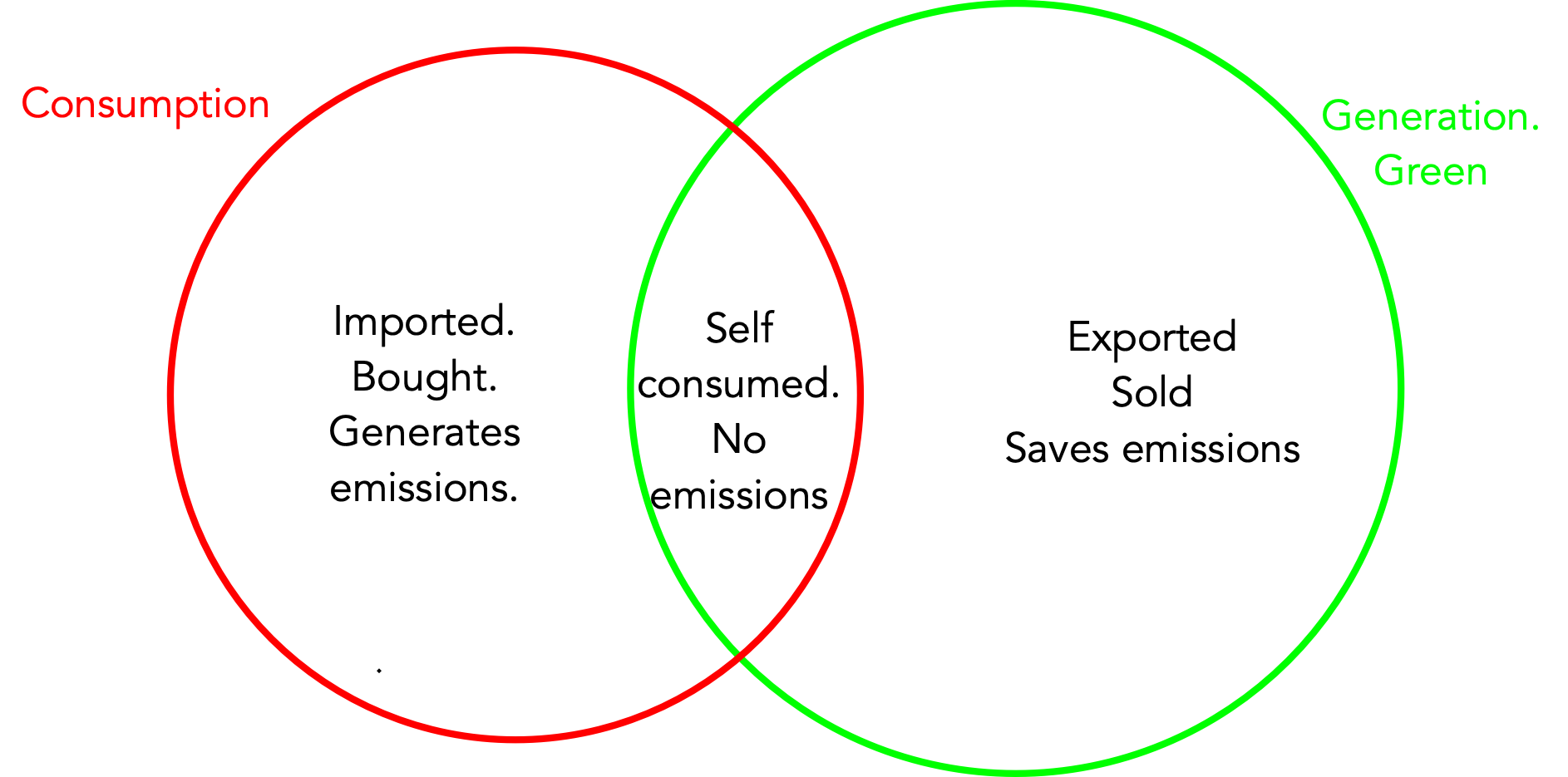|
Size: 3919
Comment:
|
Size: 3918
Comment:
|
| Deletions are marked like this. | Additions are marked like this. |
| Line 15: | Line 15: |
| * Batteries do decrease the likelihood of the power company [[https://www.solarquotes.com.au/blog/dynamic-solar-exports-victoria/|reducing the output of inverters.]] to stabilise the grid. Such reductions of solar generation would increase emissions as long as the grid retains fossil fuelled generation. | * Batteries do decrease the likelihood of the power company [[https://www.solarquotes.com.au/blog/dynamic-solar-exports-victoria/|reducing the output of inverters]] to stabilise the grid. Such reductions of solar generation would increase emissions as long as the grid retains fossil fuelled generation. |
Link to > FurtherEmissionsReduction2024 >
The effect on emissions of adding batteries to a solar system
|
The red circle represents the total energy consumed over some time interval. |
|
Installing a battery does not change the energy consumed, i.e.the size of the red circle, nor the energy generated, the size of the green circle. |
Notes
Adding the battery will actually increase consumption slightly as charging and discharging cause some losses as heat. See here.
The tradable carbon credits for the saved emissions due to exported energy will be counted by the power company if they were signed over at installation, as is very common.
- Emissions are logically proportional to the difference between Consumption and Generation, neither of which change. This is the same as Bought minus Sold, as self consumption neither causes nor displaces grid generation, and Bought and Sold change by equal and opposite amounts.
- Increasing self consumption in other ways, such as time shifting loads, have the same effect.
- Widespread batteries do facilitate decarbonisation of the grid by reducing the variations in demand.
Batteries do decrease the likelihood of the power company reducing the output of inverters to stabilise the grid. Such reductions of solar generation would increase emissions as long as the grid retains fossil fuelled generation.
Sorry David, but the argument in the second layer box, that is the overlap, is invalid. The export and import does not remain the same as domestic inverters have an artificial 5kWh export limit to the grid, even if they are capable of more and irrespective of the total import. The church inverters have 3 x 10 kWh or 30 kWh limit.
If a domestic solar array generates (say 8 kWh) then all 8 kWh goes to a battery whereas only 5 kWh goes to the grid.
So no, I do not agree with your conclusion.
I also feel that Carbon Credits do not change the equation, they only allow the holder to offset the actual. Reducing overall demnd even by adjusting time based using, will reduce emissions. The carbon credit process does not reduce overall emissions in the community.
 The Glen Waverley Uniting Church PSALTER
The Glen Waverley Uniting Church PSALTER
